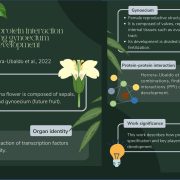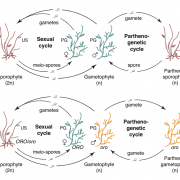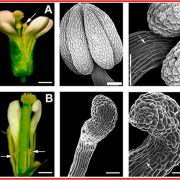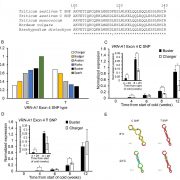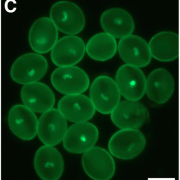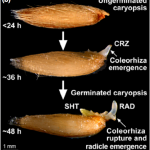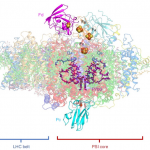TERMINAL FLOWER 1-FD complex target genes and competition with FLOWERING LOCUS T (Nat. Commun.)
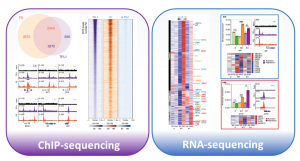 The onset of reproductive development is tightly regulated in response to environmental cues as early and delayed flowering greatly affects seed production. In Arabidopsis, the timing of flower formation is controlled by members of the Phosphatidyl Ethanolamine-Binding Protein (PEBP) family: TERMINAL FLOWER 1 (TFL1) promotes inflorescence fate whereas FLOWERING LOCUS T (FT) promotes floral fate. As PEBPs lack DNA binding activity, their interaction with FLOWERING LOCUS D (FD), a bZIP transcription factor in the apex is required to coordinate the expression of downstream genes. In this paper, Zhu and coworkers elegantly resolved the mechanisms underlying the antagonism between FT and TFL1 in shaping inflorescence architecture. Using the ChIP-sequencing experiment, the authors identified an overlap between TFL1 and FD-peaks, and reduced TFL1 chromatin occupancy in fd-1 mutant, indicating that FD is required to recruit TFL1 to target loci. Among the target genes, TFL1 and FT acts antagonistically on LEAFY (LFY), a floral meristem identity gene. Interestingly, three bZIP-binding sites in the second exon of LFY defined its spatio-temporal expression, as these cis-regulatory elements are necessary for repression via TFL1–FD in the shoot apex as well as direct activation via FT-FD in floral primordia. RNA-sequencing on wild-type, ft and, tfl1 mutant plants identified changes in transcriptional programs related to reproductive development and response to endogenous and abiotic signals. To conclude, plants modulate inflorescence architecture in response to seasonal changes by altering the balance between antagonistic PEBPs. At the molecular level, FT and TFL1 compete for bZIP binding sites in regulatory sequences of target genes, which regulate flower development and signaling pathways. (Summary by Michela Osnato @michela_osnato) Nat. Commun. https://doi.org/10.1038/s41467-020-18782-1
The onset of reproductive development is tightly regulated in response to environmental cues as early and delayed flowering greatly affects seed production. In Arabidopsis, the timing of flower formation is controlled by members of the Phosphatidyl Ethanolamine-Binding Protein (PEBP) family: TERMINAL FLOWER 1 (TFL1) promotes inflorescence fate whereas FLOWERING LOCUS T (FT) promotes floral fate. As PEBPs lack DNA binding activity, their interaction with FLOWERING LOCUS D (FD), a bZIP transcription factor in the apex is required to coordinate the expression of downstream genes. In this paper, Zhu and coworkers elegantly resolved the mechanisms underlying the antagonism between FT and TFL1 in shaping inflorescence architecture. Using the ChIP-sequencing experiment, the authors identified an overlap between TFL1 and FD-peaks, and reduced TFL1 chromatin occupancy in fd-1 mutant, indicating that FD is required to recruit TFL1 to target loci. Among the target genes, TFL1 and FT acts antagonistically on LEAFY (LFY), a floral meristem identity gene. Interestingly, three bZIP-binding sites in the second exon of LFY defined its spatio-temporal expression, as these cis-regulatory elements are necessary for repression via TFL1–FD in the shoot apex as well as direct activation via FT-FD in floral primordia. RNA-sequencing on wild-type, ft and, tfl1 mutant plants identified changes in transcriptional programs related to reproductive development and response to endogenous and abiotic signals. To conclude, plants modulate inflorescence architecture in response to seasonal changes by altering the balance between antagonistic PEBPs. At the molecular level, FT and TFL1 compete for bZIP binding sites in regulatory sequences of target genes, which regulate flower development and signaling pathways. (Summary by Michela Osnato @michela_osnato) Nat. Commun. https://doi.org/10.1038/s41467-020-18782-1


